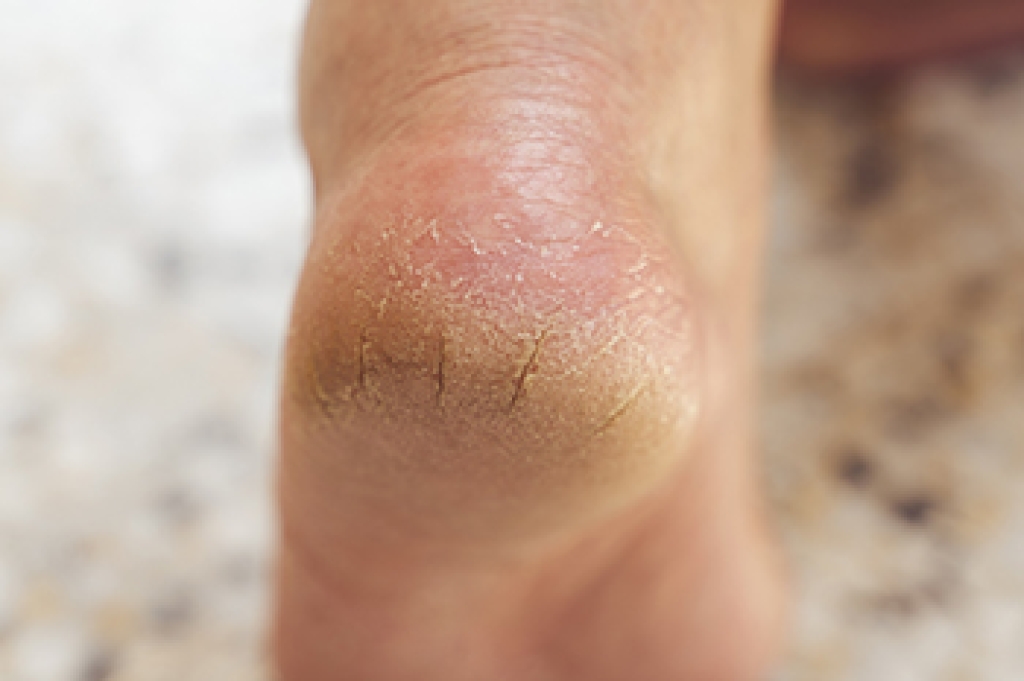
Heel fissures, or cracked heels, often occur when the skin on the feet becomes thick, dry, and less elastic. Over time, pressure from standing or walking causes the hardened layers to split, creating painful cracks that can bleed or become infected. Research into the structure of healthy and callused skin shows that excess keratin buildup reduces flexibility and traps moisture unevenly, leading to deeper fissures. Regular exfoliation and hydration help restore softness and prevent further damage. Applying urea-based or lactic acid creams softens thickened skin, while protective heel balms lock in moisture. In severe cases, debridement and professional podiatric care may be necessary to remove excess tissue and promote healing. Consistent foot care and wearing supportive shoes that reduce friction and pressure are key to keeping heels smooth, strong, and comfortable. If you are suffering with painful or chronic heel fissures, it is suggested that you see a podiatrist for expert care.
Cracked heels are unsightly and can cause further damage to your shoes and feet. If you have any concerns, contact David Mansky, DPM from Mansky Podiatry. Our doctor can provide the care you need to keep you pain-free and on your feet.
Cracked Heels
Cracked heels appear unappealing and can make it harder for you walk around in sandals. Aside from looking unpleasant, cracked heels can also tear stockings, socks, and wear out your shoes. There are several methods to help restore a cracked heel and prevent further damage.
How Do You Get Them?
Dry skin is the number one culprit in creating cracked heels. Many athletes, walkers, joggers, and even swimmers suffer from cracked heels. Age and skin oil production play a role to getting cracked heels as well.
Promote Healing
Over the counter medicines can help, especially for those that need instant relief or who suffer from chronic dry feet.
Wear Socks – Wearing socks with medicated creams helps lock in moisture.
Moisturizers – Applying both day and night will help alleviate dryness which causes cracking.
Pumice Stones – These exfoliate and remove dead skin, which allows for smoother moisturizer application and better absorption into the skin.
Change in Diet
Eating healthy with a well-balanced diet will give the skin a fresh and radiant look. Your body responds to the kinds of food you ingest. Omega-3 fatty acids and zinc supplements can also revitalize skin tissue.
Most importantly, seek professional help if unsure how to proceed in treating cracked heels. A podiatrist will help you with any questions or information needed.
If you have any questions, please feel free to contact our office located in Hastings, MI . We offer the newest diagnostic and treatment technologies for all your foot care needs.
